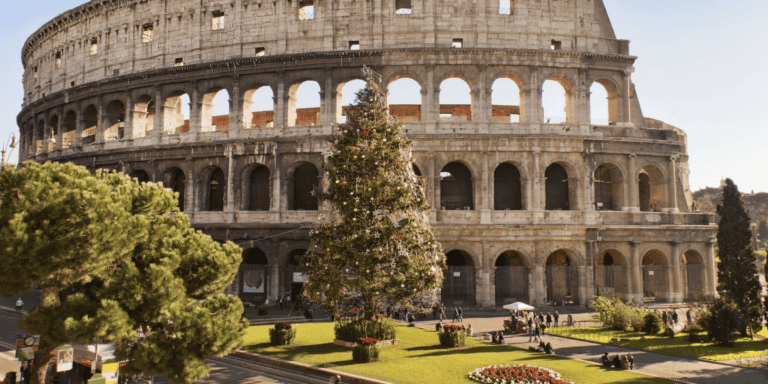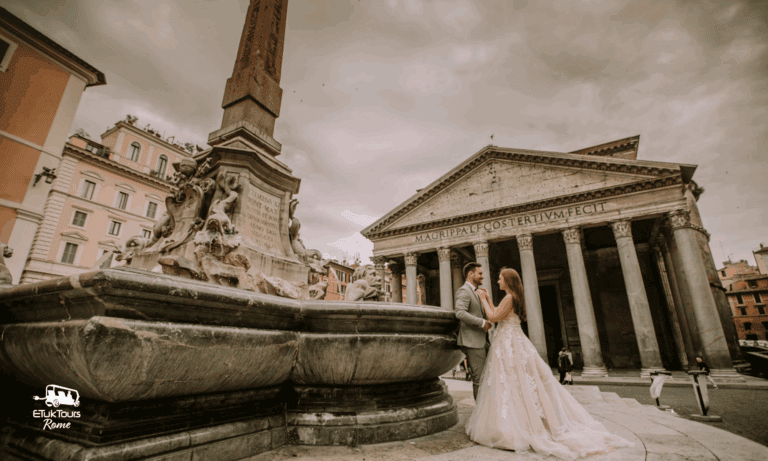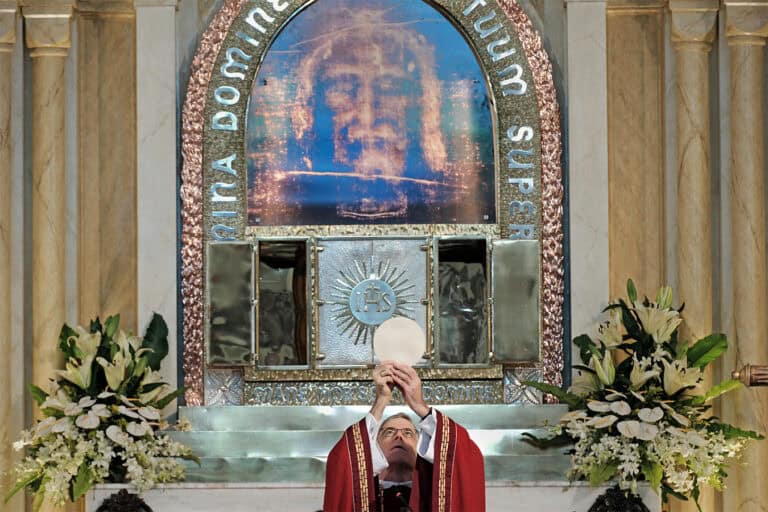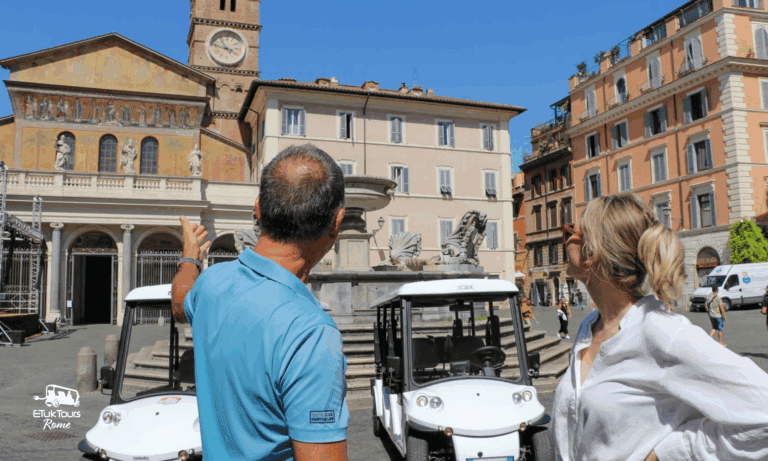Basilicas are not only remarkable religious buildings but also symbols of cultural and architectural heritage. Over time, the term basilica has come to refer to a specific type of Christian church building, which evolved significantly from its Roman origins. These grand structures, particularly Christian basilicas, are characterized by a series of distinct features that set them apart from other religious buildings. The development of the basilica has been shaped by centuries of history, from the 1st century through the medieval church period, and continues to have architectural significance to this day.
Origins and Etymology of the Term “Basilica”
The term basilica has its roots in the Greek term “basilike,” meaning “royal” or “kingly,” indicating a building of importance. In ancient Rome, a basilica referred to a large rectangular building, often used for civic purposes such as law courts or public meetings. With the rise of Christianity, early Christians adopted this form for their church buildings due to its spaciousness and suitability for gatherings. Over time, the original basilica transitioned from a civic structure to a religious one, becoming the quintessential form for Christian churches.
“The basilica was initially a Roman civic building used for various administrative and legal functions. By the early Christian period, it was transformed into a place of worship, reflecting the shift in societal values as Christianity became more institutionalized.” – Encyclopedia of Architecture
Key Features and Architectural Style
Christian basilicas are most commonly known for their unique architectural style, which features a large central aisle, often referred to as the center aisle, flanked by side aisles. This layout creates a grand, open space suitable for both communal worship and large processions. The basilica style is typically characterized by a rectangular or oblong building, with a semicircular apse at the far end, which serves as the focal point for the altar. The roof of a basilica can vary, with many featuring a timber roof or, in the case of domed basilicas, a majestic dome that emphasizes the grandeur of the space.
“The basilica style of architecture became synonymous with Christian churches during the early Middle Ages. The large central aisle, or nave, served as the focal point for the congregation, while the apse marked the place of the altar, symbolizing the sacred center of worship.” – The Architectural History of Churches by W. L. Jenkins
Basilicas are also noted for their spatial layout, which was designed to accommodate large congregations. The central nave, with its longitudinal aisles, is supported by rows of columns or arches, allowing for easy movement of the congregation and clergy during religious services. In addition to their function as places of worship, these churches often serve as centers of worship and international centers for pilgrimage, particularly in the case of pilgrimage basilicas such as those in Rome or Jerusalem.
“The design of the basilica was intended to facilitate a communal experience of worship. The spacious layout allows for a large congregation to gather, while the architectural features such as columns and arches emphasize the verticality, symbolizing a connection to the divine.” – The Pilgrimage Church: Architecture, Symbolism, and History by E. B. Smith
Types of Basilicas and Special Designations
The distinction between different types of basilicas is crucial for understanding their cultural and ecclesiastical importance. The special designation of a basilica can be granted by the Pope, signifying a church’s significance either due to its historical value or its association with important religious events. There are two main types: major basilicas and minor basilicas. Major basilicas, also known as papal basilicas, are the four most important basilicas in the Catholic Church, all of which are located in Rome: St. Peter’s Basilica, St. John Lateran, St. Paul Outside the Walls, and St. Mary Major. These churches have permanent designation as the most significant places of worship in the Christian world.
“The title of major basilica is a unique ecclesiastical distinction, bestowed by the Pope upon the four most important churches in the world. This designation emphasizes the importance of these churches as centers of Catholic worship and authority.” – Vatican Studies: The Significance of Major Basilicas by C. M. Matthews
On the other hand, minor basilicas are located globally and are granted ecclesiastical privileges for their historical, architectural, or spiritual significance. Examples of basilicas in this category include the Euphrasian Basilica in Poreč and the 11th century basilica of San Clemente in Rome. While they may not hold the same international status as papal basilicas, minor basilicas are still esteemed for their cultural and religious importance.
“Minor basilicas, although not granted the same global prominence as the major basilicas, are important places of worship in their own right. They are often associated with significant pilgrimage routes and are revered for their historical and artistic contributions.” – Pilgrimage and Basilica: A Study of Catholic Sacred Sites by L. S. Dubeck
Additionally, basilicas can be categorized by their architectural style, with different forms such as the imperial basilicas, which were monumental structures commissioned by emperors like Constantine the Great, and medieval church basilicas, which evolved during the Middle Ages. Basilica Ulpia is a notable example of an imperial basilica, showcasing the grandeur and influence of Roman architecture on Christian structures.
Basilica vs. Other Christian Churches
While all basilicas are Christian churches, not all Christian churches are basilicas. A basilica holds a special designation granted by the Pope and is often recognized for its architectural significance or historical importance. In contrast, a parish church is a regular church serving a local congregation. However, a Catholic cathedral is distinguished by being the primary church of a diocese, where the bishop’s official chair, or cathedra, is located. Thus, a cathedral is not necessarily a basilica, even though it may have similar architectural features.
“The distinction between a basilica and a cathedral lies not only in architectural style but also in ecclesiastical function. A basilica is granted a special title by the Pope, whereas a cathedral serves as the seat of a bishop, symbolizing his authority within the diocese.” – Church Architecture and the Episcopal Authority by H. R. Winfield
The Role of Basilicas in Religious Life
Basilicas have long played a vital role in the spiritual life of Christians. In addition to being places of worship, many basilicas serve as pilgrimage churches, where people come from around the world to participate in special liturgies and religious events. The event of faith that occurs within the walls of a basilica can be profoundly transformative for the faithful, especially during special occasions such as feast days or papal ceremonies.
“The significance of basilicas goes beyond their architectural beauty; they serve as vital centers for spiritual renewal and communal worship, particularly during religious festivals and pilgrimages.” – Sacred Space: Pilgrimages to the Basilicas by A. M. Ferguson
The basilica’s design also contributes to the active participation of the congregation. The high ceilings, expansive spaces, and beautiful mosaics or frescoes encourage a sense of reverence and awe, facilitating the ceremonial purposes of the liturgy. Moreover, the presence of relics or other sacred objects within basilicas often adds to their significance, attracting pilgrims and visitors seeking spiritual connection.
“Basilicas are not just architectural masterpieces; they are spiritual hubs where the faithful come to deepen their connection to the divine, making them essential to the Christian experience.” – Faith in Architecture: The Role of the Basilica by S. J. McLeod
Famous Examples of Basilicas
Throughout history, numerous basilicas have become famous for their beauty, historical significance, or association with major saints. For instance, St. Peter’s Basilica in Rome is one of the most famous Catholic basilicas and serves as the heart of the Roman Catholic Church. Other notable examples include the 4th century basilica churches of Santa Maria Maggiore and San Giovanni in Laterano, which are renowned for their beautiful mosaics and rich history.
“St. Peter’s Basilica is perhaps the most iconic representation of a Catholic basilica. Not only does it symbolize the center of the Catholic faith, but it also embodies centuries of architectural innovation, from its Renaissance dome to its Baroque facade.” – The History of St. Peter’s Basilica by M. L. Giovannetti
Basilicas are also prominent in the Greek Orthodox tradition, with significant examples like the 4th-century basilica of Hagia Sophia in Constantinople, which was later converted into a mosque and is now a museum. This building represents the intersection of religious and cultural life in both the Byzantine and Ottoman periods.
“Hagia Sophia, originally constructed as a Christian basilica, stands as a symbol of the Byzantine Empire’s grandeur. Its transformation into a mosque and later a museum highlights the dynamic history of religious and political authority in the region.” – Byzantine Architecture and Hagia Sophia by C. J. Pugliese
Key Features of Basilica Architecture
| Feature | Description | Architectural Significance | Historical Context |
|---|---|---|---|
| Nave | The central, long aisle of the basilica used for processions and congregational movement. | The nave serves as the focal point for the congregation during Mass, reflecting the movement of the faithful toward the altar. | In early Christian basilicas, the nave represented the journey of the Christian faithful toward salvation. |
| Apse | A semi-circular or polygonal area at the end of the basilica, typically housing the altar. | The apse is the most sacred part of the basilica, symbolizing the divine presence. It is often decorated with mosaics or frescoes depicting biblical scenes. | The apse evolved from Roman basilicas, where it was used as the judge’s seat. In Christian basilicas, it became the focus of worship. |
| Aisles | Side passages that flank the nave, providing space for movement during services. | Aisles allow for the smooth flow of congregation and clergy during processions and ceremonies. They help create a spacious, organized interior. | In early Christian basilicas, aisles allowed for the accommodation of large crowds, ensuring easy access to the altar. |
| Clerestory | Upper level windows, typically above the aisles, that allow natural light to illuminate the interior. | The clerestory helps to flood the basilica with light, symbolizing divine illumination. It is an important design feature in many basilicas, emphasizing spirituality. | Originating from Roman architecture, the clerestory became a key feature in Christian basilicas, enhancing their transcendent feel. |
| Timber Roof | A traditional roofing style using wooden beams, often replaced with more durable materials such as stone or concrete in later basilicas. | Timber roofs were common in early basilicas, providing a flexible and cost-effective solution for the large, open interior spaces. Modern basilicas may feature domes or vaulted roofs. | Timber roofs were prominent in early Christian basilicas, but their vulnerability to fire led to the adoption of more durable materials. |
| Transept | A transverse section of the basilica, crossing the nave at right angles, often marking the intersection of the central aisle and the apse. | The transept helps to create a cross-shaped floor plan, symbolizing the crucifixion of Christ. This architectural element also enhances the basilica’s overall spatial symmetry. | Transepts became more pronounced in medieval basilicas, such as those built during the Gothic period, for symbolic and functional purposes. |
| Fascia | The horizontal band at the top of the columns, marking the boundary between the nave and clerestory. | It emphasizes the verticality of basilica design, drawing attention to the height of the space and the connection between the earthly and divine. | Fascia was a stylistic feature of Roman basilicas, adopted by early Christian architects to elevate the visual impact of sacred spaces. |
| Columns & Pillars | Vertical supports, typically made of stone or marble, that divide the nave and aisles. | Columns and pillars define the space, separating areas for the congregation, clergy, and sacred spaces. They also symbolize strength and continuity in Christian worship. | Roman basilicas utilized columns for civic purposes, while early Christian basilicas repurposed them for religious functions. |
| Portico | A porch or entrance with a roof supported by columns, often found at the main entrance. | The portico serves as the entryway to the basilica, creating a transition from the outside world to the sacred space within. | Porticos were a common feature in ancient Roman buildings, often seen in temples and civic structures, later incorporated into basilicas. |
| Narthex | An entry or vestibule, often located at the west end of the basilica, serving as a transitional space between the secular world and the sacred interior. | The narthex allows for a place of reflection and preparation before entering the sacred space. It also serves as a space for catechumens (those preparing for baptism) in early Christianity. | Early Christian basilicas used the narthex as a place for those who were not yet baptized, reinforcing the separation between the secular and sacred. |
| Domed Ceiling | A curved ceiling, often found in later basilicas, especially in those of Byzantine or Renaissance style. | Domes symbolize the heavens, representing the divine presence above. Their vast, circular shape also creates an awe-inspiring effect for the worshippers below. | Domes became prominent in basilicas from the 5th century onward, with notable examples like St. Peter’s Basilica in Rome and the Hagia Sophia in Constantinople. |
| Mosaic Decoration | The intricate use of mosaic tiles, often gold or colored glass, to depict religious scenes and figures. | Mosaics serve both decorative and didactic purposes, teaching the Christian faith through visual storytelling. They often cover the apse, clerestory, and other significant areas. | Mosaics were widely used in Early Christian basilicas, especially during the Byzantine era, to convey theological concepts visually. |
Additional Features of Basilica Architecture:
- Basilica Layout: The overall layout of a basilica is designed to facilitate both congregational worship and the symbolic journey towards salvation. The axial design, with its long nave and focus on the altar, emphasizes the path of the faithful.
- Sacred Relics and Pilgrimage: Many basilicas house sacred relics, which draw pilgrims from around the world. The presence of relics in the apse or crypt of a basilica often enhances its significance as a pilgrimage church.
- Architectural Evolution: As basilicas evolved from their Roman origins, they incorporated elements from different architectural periods, such as Romanesque, Gothic, Renaissance, and Baroque. Each period added new layers of meaning and beauty to basilica design.
In understanding the basilica, we see not only an architectural form but also a living space for faith, culture, and community. The basilica’s design reflects the aspirations of the Christian faith to create a space where the sacred and the earthly meet, providing a backdrop for worship and a symbol of spiritual journey. From the early Christian basilicas of the 4th century to the grand structures of the modern era, basilicas continue to be central to Christian religious life and heritage.
The Basilica as a Symbol of Faith
Beyond their architectural grandeur, basilicas serve as enduring symbols of Christian faith. They are not just buildings but temples of the spirit, offering a space for prayer, reflection, and community worship. The papal symbol associated with major basilicas further underscores their importance in the Catholic Church, signifying their role as focal points of ecclesiastical and religious life.
“The basilica, whether major or minor, is a symbol of the living Church, where the community gathers in the presence of the divine. Its design, purpose, and history all serve to reinforce its spiritual significance.” – The Basilica: A Symbol of the Christian Church by A. D. Brooks
In conclusion, basilicas are more than just architectural marvels; they represent the intersection of faith, culture, and history. From their Roman roots to their significance in Christianity, basilicas stand as lasting testaments to the human quest for the divine. Their presence in cities across the world reminds us of the importance of sacred spaces in shaping religious identity and fostering communal faith.








